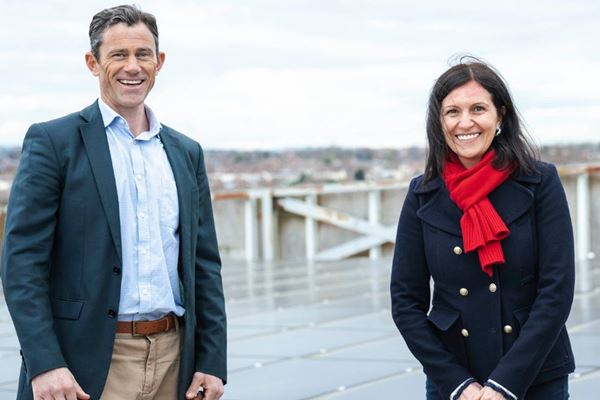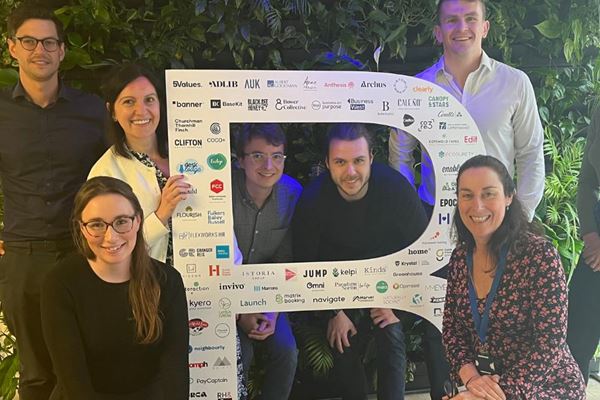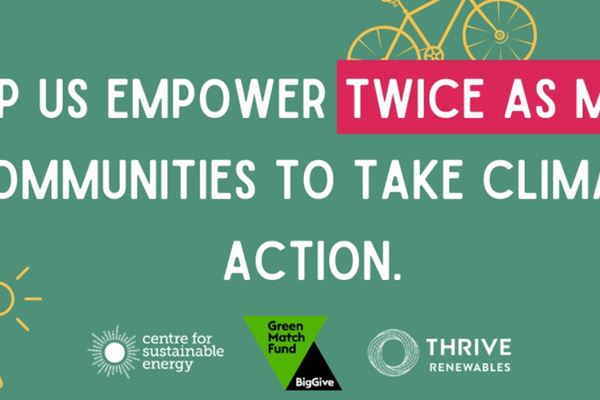While there are still a lot of details to thrash out, now more than any point in history, reducing our impact on the planet has become a fundamental driver for change. However, while government and policymakers continue to talk about and plan for the transition to Net Zero, Thrive has been making it happen in 2020 with investments in geothermal, solar, battery storage and hydro. The projects we are developing and funding reflect our mission to power the UK’s transition to a sustainable energy future. Between them, they have the potential to:
- Generate renewable electricity without subsidies
- Deliver power directly to the end user
- Store power when renewables are abundant and supply it to the grid when the sun has set or the wind is not blowing.
This diversification is part of Thrives’ contribution to not only a cleaner, but also a smarter energy system.
Wicken battery storage project
This month we acquired the rights to build a 5MW battery storage project located just outside Milton Keynes. This is our first battery project and will provide vital flexibility to grid. As we move towards a renewables dominated electricity system, balancing services are needed so we can store electricity when wind and solar energy are abundant and release it during peak times when consumer usage increases.
Commercial solar power
In November, Thrive joined forces with Olympus Power to enable businesses to install solar panels and use the renewable power they generate. We developed a new financing framework which provides the funding for Olympus Power to install hundreds of commercial solar arrays. Olympus is looking to fund up to £75m of commercial solar installations. This is our first solar roof initiative, building on our ‘direct wire’ approach where businesses benefit financially and environmentally from the renewable electricity they generate on site.
Haverigg II wind farm life extension
Our four-turbine Haverigg II wind farm in Cumbria was the first wind farm we built over 20 years ago. In October, Copeland Borough Council approved our application to extend the working life of the project. The existing turbines now have planning permission to continue operating until 2032.
Riding Sunbeams
In September, Thrive invested in world-leading solar rail pioneer, Riding Sunbeams. They’re planning to help decarbonise the UK’s transport system by building solar farms on disused land by the side of the railways and plugging them directly into the rail system. They’re also working with trackside communities and commuters to take ownership of these solar projects. This will ensure those who use and live by the railways will benefit from the green electricity powering them. In November they were awarded a £2.5 million grant from the government’s Getting Building Fund. This additional funding will allow Riding Sunbeams to develop Cuckmere solar farm, a 3.75MW community owned project in East Sussex, that will be connected directly to the railway network.
Loch a Bhraoin Hydro
In May 2019, Thrive provided a mezzanine loan for the construction of a 2MW hydro-electric project in Scotland. It has the potential to generate enough renewable electricity for around 2,2501 average UK homes, saving more than 3,8002 tonnes of CO2 emissions annually. The project was constructed in 2020 and is now operational.
United Downs geothermal powerplant
In February, Thrive made an investment into the UK’s first commercial geothermal powerplant in Cornwall. United Downs has the potential to supply 3MW of baseload electricity and 12MW of renewable heat for local use. At 5.1km, it is the deepest onshore well in the UK. Final testing is taking place currently, with a view to commencing construction in 2021. The potential impact of United Downs has grown since the discovery of Lithium in the geothermal brine from the site. Initial test results have shown very high lithium concentrations, which are believed to be amongst the highest in geothermal waters globally. In additional to generating much needed renewable heat and electricity, the project will host trials for environmentally-responsible Direct Lithium Extraction technology, which aims to demonstrate that lithium can be produced from geothermal waters with a net zero carbon footprint.
[1] Calculated using the most recent statistics from the Department of Business, Energy and Industrial Strategy (BEIS) showing that annual UK average domestic household consumption is 3,618kWh, https://www.renewableuk.com/page/UKWEDExplained
[2] RenewableUK uses BEIS’s “all fossil fuels” emissions statistic of 450 tonnes of carbon dioxide per GWh of electricity supplied in the Digest of UK Energy Statistics (July 2020) p125 Table 5D (“Estimated carbon dioxide emissions from electricity supplied 2015 to 2017”), https://www.renewableuk.com/page/UKWEDExplained. Average per capita greenhouse gas emissions.



